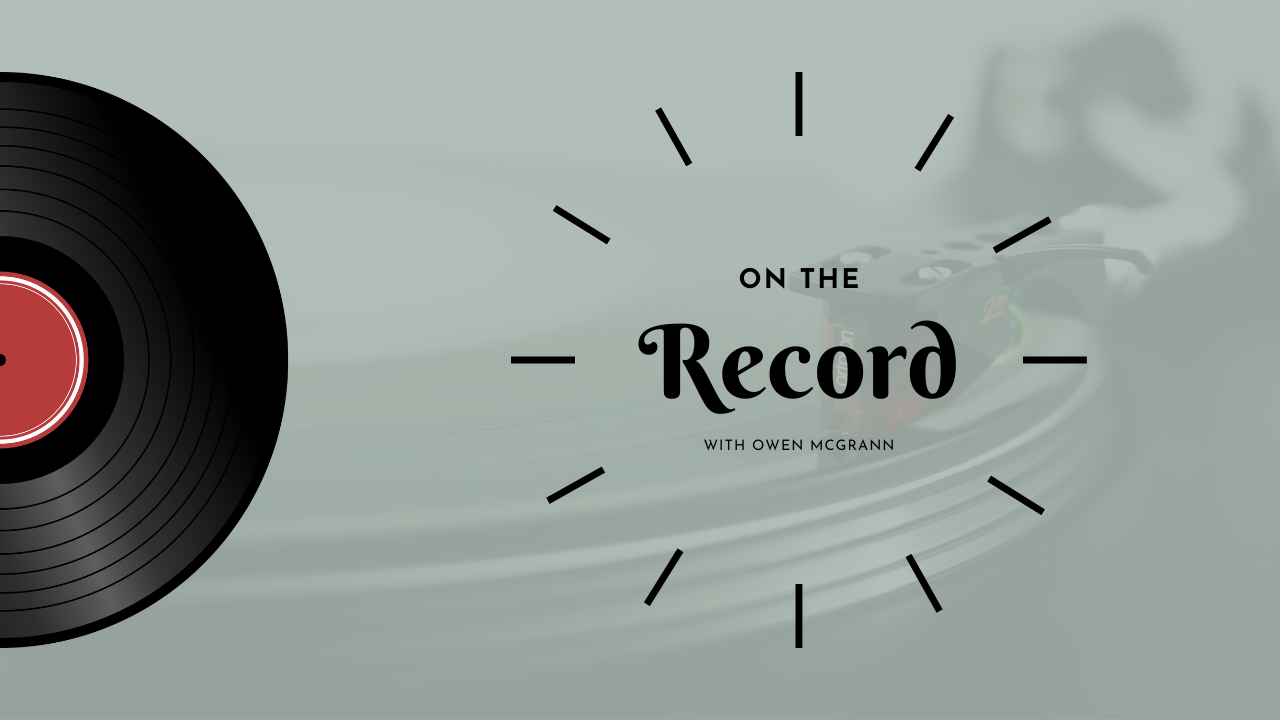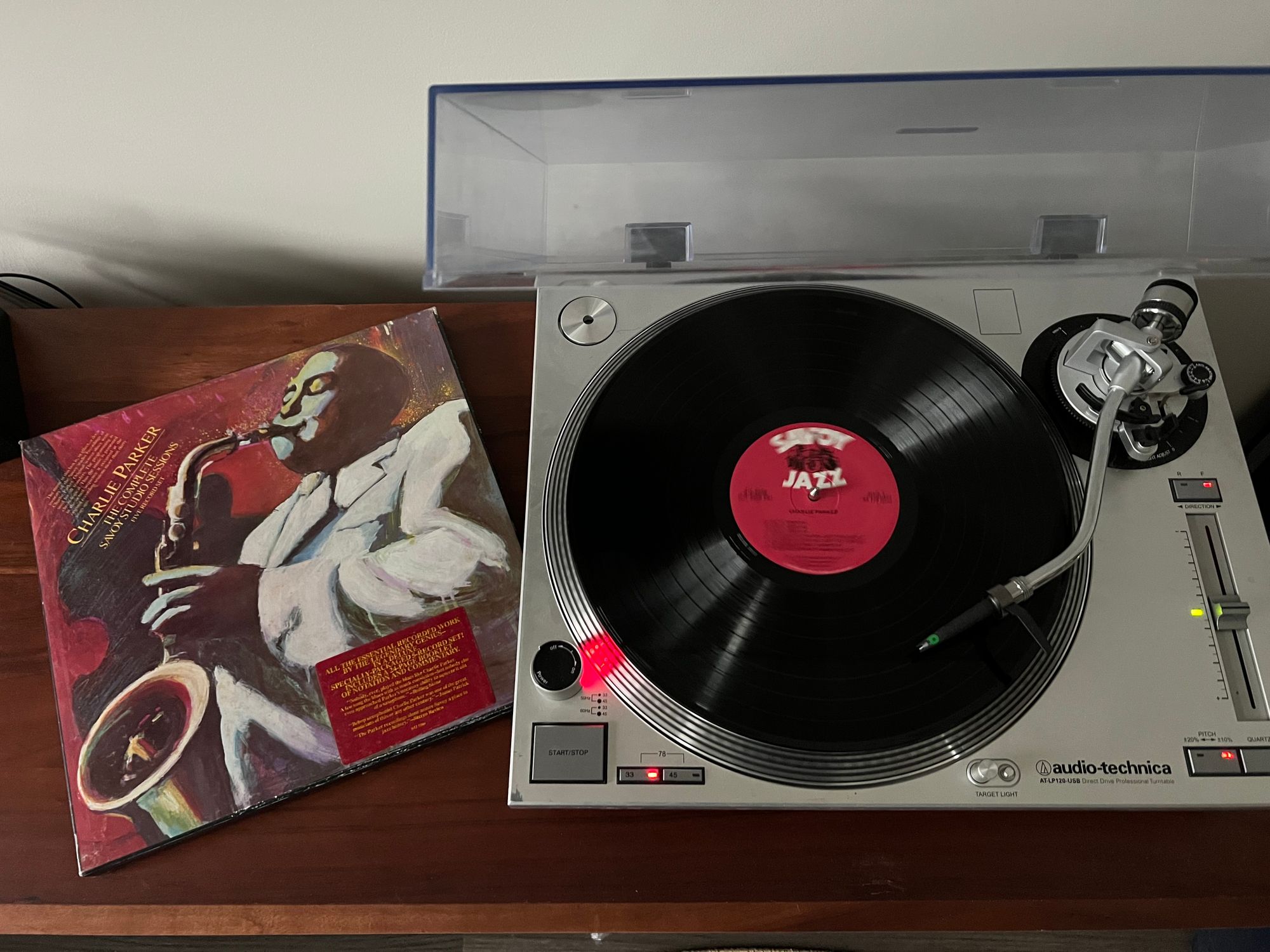OTR, Take 26: Charlie Parker - The Complete Savoy Studio Sessions

Sometimes your heart's not in it. It can be surprising: activities that generally get you excited take on a hue that invites dread. Sometimes it's more like a malaise, an ennui, that takes hold, sapping you of motivation.
I'm a strong believer in generally pushing through this: in Steven Pressfield's formulation, this is Resistance at work. I would argue that upwards of 90% of the time, inspiration follows the doing and not the other way around. We have a funny cultural notion that people who accomplish things have a Eureka! moment and then press into motion.
But it's almost always the reverse.
The people who most frequently produce valuable writing, music, ideas, etc. do so not because they have some magic ability to get inspired and act only on inspiration; they are consistent and innovative because they sit down at the desk and do the work even when — especially when — they've got nothin'.
Building this habit of sitting down (or standing up — I guess it depends on what you do!) to do the work is the mark of a professional. If the key to having good ideas is having a lot of ideas, the key to good writing is writing a lot. And reading a lot. And thinking a lot.
As some of you know, I'm writing a novel. I'm just shy of halfway through the Shitty First Draft, stuck in the middle of the seventh (of fifteen) chapters. It's a tricky chapter, with a lot going on that needs to be sub rosa and I've been having trouble modulating the narrative to get across the charge between two groups that don't like each other much (Catholics and Episcopalians in 1941 Pittsburgh); this is tricky because to our modern sensibilities, Catholics and Episcopalians are very similar.
This is a specific instance of a broader issue I've run into: certain distinctions become erased with time and it can be difficult (without being pedantic) to get this across when writing about a near-past that is mostly similar but still an alien world. For instance, today we consider Pittsburgh to be a very white city and, therefore, not particularly diverse. In 1941, it was very diverse — but that's because being Polish, Irish, Ukranian, Italian, Czech, German, English, etc. had not yet collapsed into being "white."
Anyway, this is a rambling way of saying: I've let myself get caught up with the presumed difficulty of doing it "right" that I stopped sitting down at the table. That's unlike me, and I am calling myself out on it. I need to get through the Shitty First Draft so I can start editing and making the book presentable.
That starts today.
If you've read On the Record for any length of time, you will likely be unsurprised that, given the above, this morning I've elected to center myself with some jazz. Specifically, some jazz that was recorded right in the time period my book, Pennhollow, is set. There are two non-human characters in the book: the city of Pittsburgh and jazz music. (There's also a dog, but you get my drift.)
Pennhollow details the tension in 1946 between the dominant swing jazz and the upstart bebop. In very basic terms, swing jazz tended to be big bands and designed to be dance music. Think Benny Goodman, Louis Armstrong, Cab Calloway, Count Basie, etc.
Bebop was something different entirely. The groups tended to be much smaller — four to six members — and the music didn't care much about danceability. The guys who played bebop were serious musicians (as they saw it) and were pushing the boundaries of jazz. They would play so fast, sometimes, that they'd bring clubs to a standstill: the audience didn't know how to participate in the shows. This, of course, made it a bit difficult for bebop acts to get stage time in some locations, as outside of New York, Chicago, Pittsburgh, and a few other jazz centers, the club owners wanted people dancing and buying drinks.
Enter Charlie "Bird" Parker, one of the finest alto sax players to have ever played. Like most bop pioneers, he cut his teeth in swing bands. Bird's first break was getting invited to play in Jay McShann's band, where — as the boredom of endless touring will do — Parker began developing a new sensibility. He moved to New York as World War II was igniting in Europe and got to know some other then-unknown folks like Dizzy Gillespie, Thelonious Monk, and Charlie Christian.
After spending some time playing in Earl Hines's band in 1942, Parker began playing with Gillespie although there are precious few recordings from this time, the result of a musicians union strike. (There are next to no recordings at all from this period.) Through this period, Bird kept playing around with a tune called "Cherokee."
It was an old tune, but he heard something different in it. He kept coming back to the song until he reached the breakthrough that enabled bebop: when soloing, the twelve semitones of the chromatic scale can lead into any key.
That's music nerd for: Charlie Parker blew up the rules for soloing and unlocked a whole new melodic and structural framework that was both simple and very complicated at the same time.

By 1945, Parker had become prominent enough for the Savoy label to sign him and arrange for a recording session with a band of his choosing. Calling his band the Reboppers, they entered the studio in November 1945 and set to tape one of the most astonishing sessions in jazz history.
Get a load of his band: Dizzy Gillespie and Miles Davis (who was still mostly unknown) on trumpet, Curley Russell on bass, and Max Roach on drums. I mean, good grief those were some heavyweights before they became heavyweights.
I could listen to these recordings all day — and I might, as I'm going to sit down at the dining room table, where I work on Pennhollow, and I'm going to do the work.
I hope you all have a lovely weekend and you find your way to your work, whatever it may be.
Member discussion